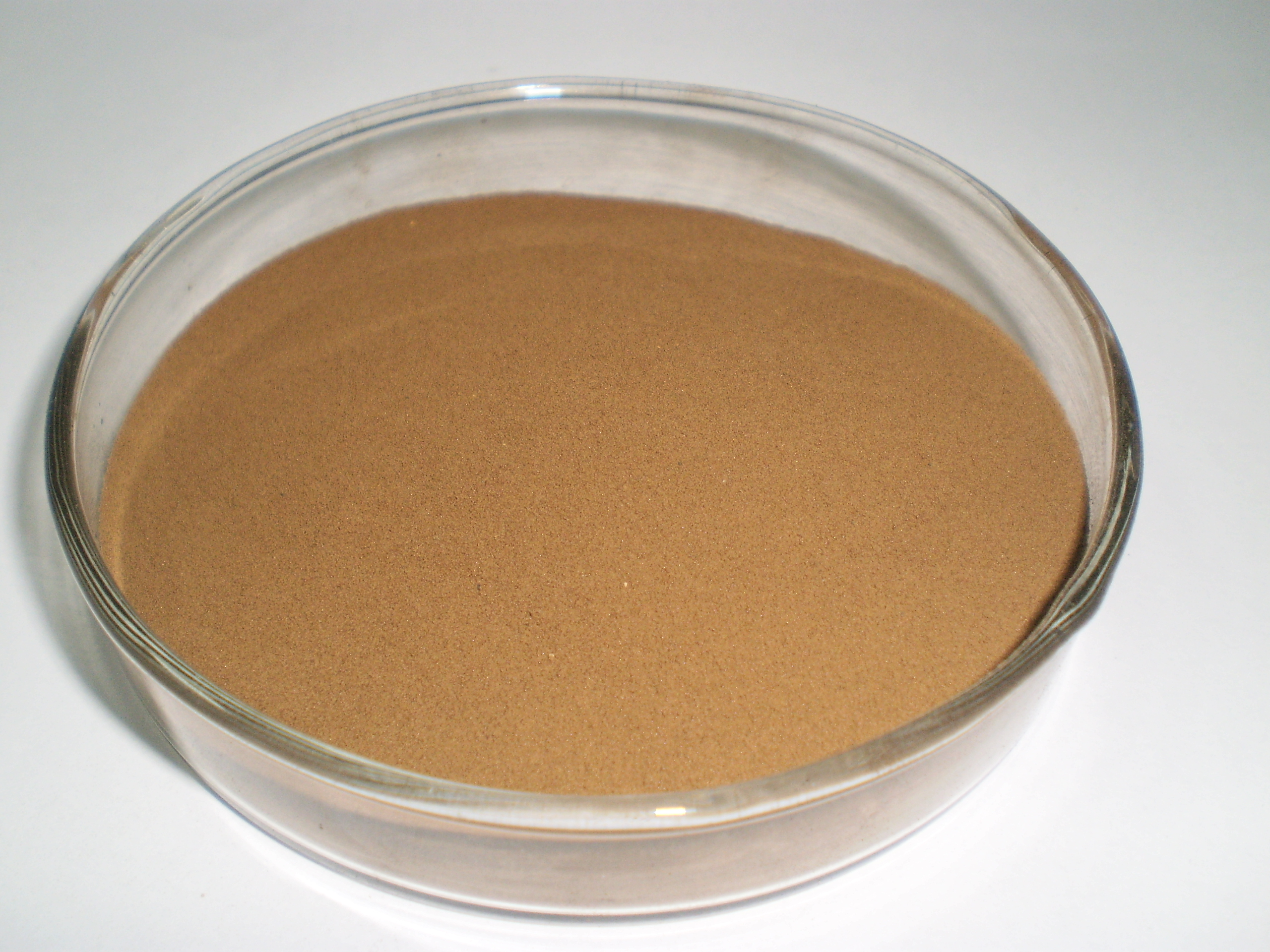Lignosulphonate, or lignosulfonate, or sulfonated lignin, (CAS No. 8061-51-6) are water-soluble anionic polyelectrolyte polymers: they are byproducts from the production of wood pulp using sulfite pulping. Most delignification in sulfite pulping involves acidic cleavage of ether bonds, which connect many of the constituents of lignin.
Lignosulfonates are obtained from sulfite pulping processes wherein cellulose is extracted from wood in the pulp industry. The so-called sulfite pulping process involves mixing sulfur dioxide (SO2) with an aqueous solution of base to generate the raw liquor for cooking the wood. In water, the sulfur dioxide forms sulfurous acid (H2SO3), which degrades and eventually sulfonates the lignin by replacing a hydroxyl group with a sulfonate group, allowing it to be solubilized and separated from the cellulose in nonprecipitated form.
The spent sulfite liquor contains lignosulfonate and sugars, primarily monosaccharides that need to be removed or destroyed so as to permit the lignosulfonate to be used effectively as a water-reducing concrete additive.
Lignosulfonate is also used as a dispersing agent in materials, such as in the production of brick or tile. Another application is as a starting material in the production of chemically modified lignosulfonate, which is used in oil well drilling fluids and dispersion of pigments. Lignosulfonate is also the most common set retarderfor oil well cementing [5]. In recent years, the pulp industry has begun to turn away from the spent acid process in favor of another process that does not have a lignosulfonate by-product. Consequently, there have been efforts to find a substitute for lignosulfonates in building and drilling or borehole operations
Sodium lignosulphonate or calcium lignosulphonate have very broad ranges of molecular mass (they are very polydisperse). A range of from 1000–140,000 da has been reported for softwood lignosulphonates with lower values reported for hardwoods.
Sodium Lignosulphonate, calcium lignosulphonate, megnesium lignosulphonate and ammonium lignosulphonates are recovered from the spent pulping liquids (red or brown liquor) from sulfite pulping.
The most widely used industrial process is the Howard process, in which 90–95% yields of calcium lignosulfonates (CAS number 904-76-3), are precipitated by adding of excess calcium hydroxide. Ultrafiltration and ion-exchange can also be used to separate lignosulfonates from the spent pulping liquid. A list of CAS numbers for the various metal salts of lignosulfonate is available.

